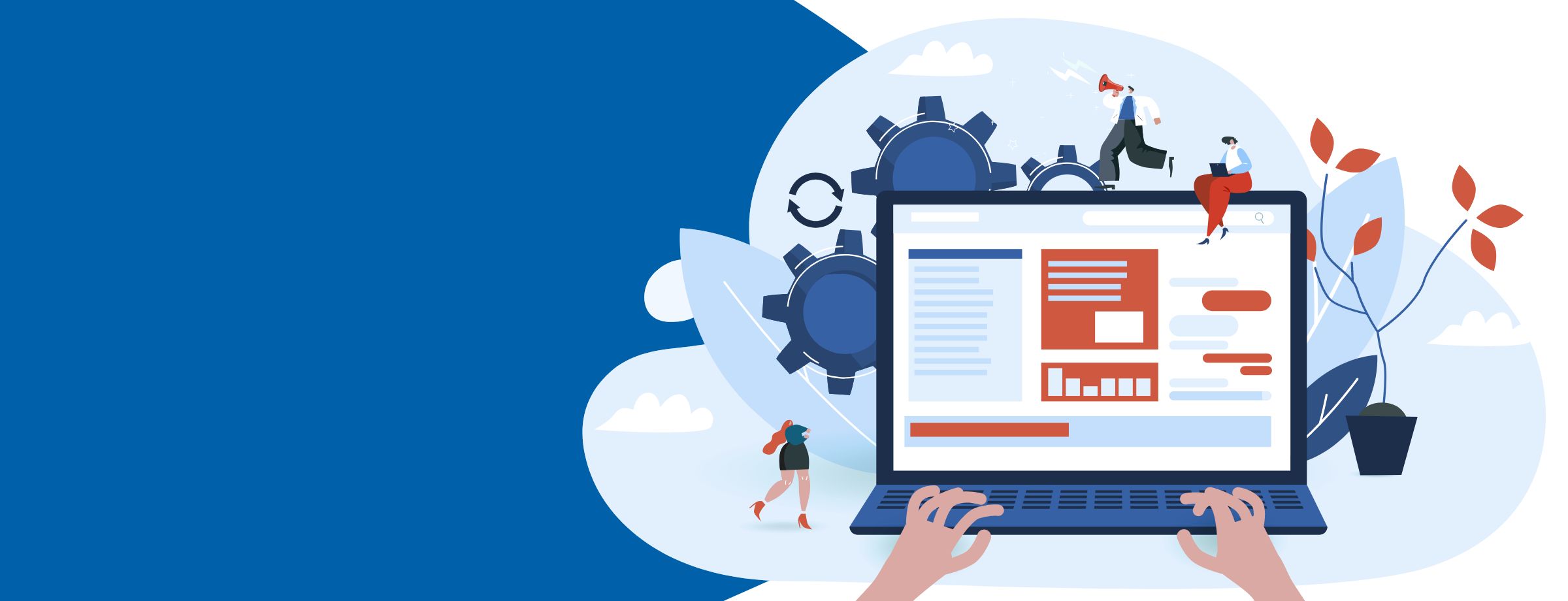It can be difficult to adapt your cloud business to the CSP program, especially if you can’t decide on which distributor to choose.
Your business has lived through many transformations over the years, but with the end of the Advisor program, choosing a CSP distributor is, now more than ever, a hot topic. How will you make up your mind with all the options being so similar to one another?
Explore our Partner Guide to see how Sherweb can help your business reach its full potential
That’s precisely why many MSPs make mistakes when it comes down to choosing a CSP distributor: they’re unprepared and aren’t ready for the changes that are coming, whether they like it or not. Fortunately for readers, we’ve heard so many of these mistakes that we made this list of the seven most common ones to avoid.
1) Starting without a business plan
Can you imagine building a new house without a proper plan? The same holds true for your cloud business. Before you dive head first into the CSP program, take a hard look at your business and decide what you have to do to succeed. How much can you expect to sell in the first year? Do you have all the resources you need to support your new customers? We’ve seen many MSPs and VARs stall or fail simply because they didn’t have the right plans in place. Do your research!
2) Not using your unique selling point to build the best offer
When you first start thinking about selling cloud services under the CSP program, you’ll be looking for the right solutions to sell and how to market them. Take a moment to ask yourself this important question: why should your customers do business with you instead of another reseller? Use this to develop your strategy. Determine what you can offer clients that other resellers can’t, and what makes you more relevant.
Remember, your unique selling point will also depend on your business model and the products you sell. This means you can bundle solutions like Microsoft 365, Azure and Dynamics 365 with your current offers. Once you establish yourself as a service provider and a one-stop shop, your clients will start to see you as their main resource for everything IT.
3) Forgetting to calculate your margins in your overall costs
This is an important point that many resellers overlook when they’re researching the CSP program. You have the choice of becoming a direct or indirect CSP partner, but there are strings attached. There’s no question that dealing directly with Microsoft as a direct CSP partner will give you access to cheaper licenses. But it also means you have to be ready to invest a lot of money upfront to provide 24/7 technical support services and a solid customer billing structure.
You also have to commit to selling a minimum of 5,000 new Microsoft 365 seats every year, and you have to maintain at least one Microsoft Gold Productivity Competency. Are you prepared to make those kinds of commitments? On the other hand, if you work with an indirect CSP partner like Sherweb, you can cut through the red tape and go to market a lot faster. This is why Microsoft expects 80-90% of CSP partners to work with indirect providers.
4) Thinking customers will magically appear
Many IT service providers spend a lot of time building the best product, but they fall short when it’s time to promote it to their customers. You can advertise your offering through paid activities like event sponsorship and online advertising, or you can look for free methods such as public relations and content and social media marketing. But be warned, both of these methods require a lot of work. Make sure you have a couple of marketing tactics up your sleeve.
Look for marketing material and see if there are sales reps available who can help you close more deals. Some partner programs include white-label material and complete campaigns in-a-box that you can use to get started.
5) Taking on customer migration and support blindly
If you’re going to resell cloud solutions under the CSP, you have to be able to provide your customers with the best data migration and technical support available. Each migration is different and in some cases, migration problems can lead to disruptions that can last anywhere from two minutes to two days. You want to be sure you can deal with technical problems as they occur and get back on track as soon as possible. Remember, your ultimate objective is to become your customers’ trusted advisor. Here are a few suggestions for building a solid migration plan:
- Build a user and device map
- Choose the right migration type
- Test the migration process
- Keep the lines of communication open
6) Not keeping clients up to speed
If you’ve been a reseller under Microsoft’s Advisor program, you’re probably thinking about transferring your Microsoft 365 seats to the CSP. How do your clients feel about moving to another program? It’s important that they’re comfortable with this transfer. Start the conversation with a little help from distributor like Sherweb. Our experienced account managers will walk you through the entire process. They’ll work with you to develop a pre-transfer plan so you’ll be prepared to answer all your clients’ questions.
7) Trying to get by with manual billing and provisioning
A lot of resellers tend to cut corners here. They want to start small before they invest in automation. In the beginning, it’s easy to rely on technical staff to provision and bill clients manually. However, we’ve had a lot of partners asking for help when the situation spiraled out of control. Don’t wait until your staff is overloaded with zero-value work like adding or removing a Microsoft 365 license and trying to correct invoices. It’s a slower process that will frustrate both your technicians and your customers. The financial impact from human error is another factor. Take a look around—there are many partner programs out there that feature customized partner portals and automated billing structures to simplify these tasks.
Preparation is key
We can sum up all these mistakes into one: being unprepared. You should take the time to put together a business plan, to calculate your margins in your overall costs, to carefully consider customer migration and support and to keep your clients up to speed. If you get this right, there’s no doubt you’ll rise to be one of the best MSPs in your market.
Need help addressing some of these mistakes? Become a Sherweb partner today and work with a value-added cloud solutions provider dedicated to your success.
** This article was updated on May 13, 2020




